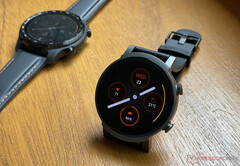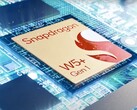It seems that Qualcomm is preparing to introduce a new Snapdragon Wear Platform. While the company continues to innovate with newer smartphone chipsets, it has left the Snapdragon Wear 4100 and Snapdragon Wear 4100+ as its primary smartwatch chipsets, despite releasing the pair in summer 2020. As such, products like the TicWatch Pro 3 are just as powerful as this year's Montblanc Summit 3.
As the embedded tweet below shows, Qualcomm has teased 'the clock is ticking on something big'. If that was not clear enough, the company also included a smartwatch emoji within the same tweet. Unfortunately, Qualcomm has not provided any details about this unreleased Snapdragon Wear chipset yet, nor when it will be arriving. Based on previous leaks, the chipset could arrive as the Snapdragon Wear 5100 and Snapdragon Wear 5100+, with the latter featuring a low-powered co-processor that the former lacks. In practice, the pair should perform as well as each other.
According to Roland Quandt, Qualcomm has built the Snapdragon Wear 5100 platforms on Samsung 4 nm nodes, a significant reduction from the 12 nm process on which it based the Snapdragon Wear 4100 platforms. Conversely, the Snapdragon Wear 5100 and Snapdragon Wear 5100+ are expected to launch with the same ARM Cortex-A53 CPU cores as its predecessors, and with identical 1.7 GHz clock speeds to boot. Purportedly, Qualcomm's next-generation Wear OS chipsets will utilise faster RAM and more powerful GPUs though, which should improve performance while delivering better battery life in some areas. Presumably, Fossil and Mobvoi will be the first partners to utilise the Snapdragon Wear 5100 platforms, with Google rumoured to have chosen custom Exynos silicon for the Pixel Watch.
The clock is ticking on something big. ????⌚ pic.twitter.com/0bYaGf3SrF
— Snapdragon (@Snapdragon) July 12, 2022
Source(s)
@Snapdragon via GSMArena
























